You might wonder if I said that magenta is an amazing creation of us humans. Yes, that is right. Magenta is not a real color that we see, rather it is made up by our brains. However, we can make the magenta color with paints and dyes.
The best way to make magenta color by mixing colors is by combining cadmium red with quinacridone red or quinacridone magenta. If not quinacridone red or quinacridone magenta can be used by themselves as a primary magenta color without color mixing.
Magenta is also closer to purple color. It is known as purplish red. However, magenta is one of the primary colors used in printers. As you see magenta can be a complicated color, but I will break it down in simple terms for you in the below sections.
What color is magenta?
Magenta is a color used in printing and on digital screens. In printing, magenta is one of the 3 primary colors, while on digital screens it is a secondary color. However magenta is not a very popular color among artists. Let’s take a look at magenta in different situations.
Magenta in printing
For paints, dyes, and pigments magenta is a primary color. So it is one of the 3 primary colors used in printing (the other primary colors are cyan and yellow). The primary magenta used in printing is known as the process magenta.
Process Magenta #FF0090
Printers use the CMYK (C=Cyan, M=Magenta, Y=Yellow, K=Key color or black color) model when printing. It allows printed to print a wide range of colors without having to add other ink colors. If printers used the traditional RBY (red, blue, and yellow) primaries, the range of colors that can be printed from these colors is low.
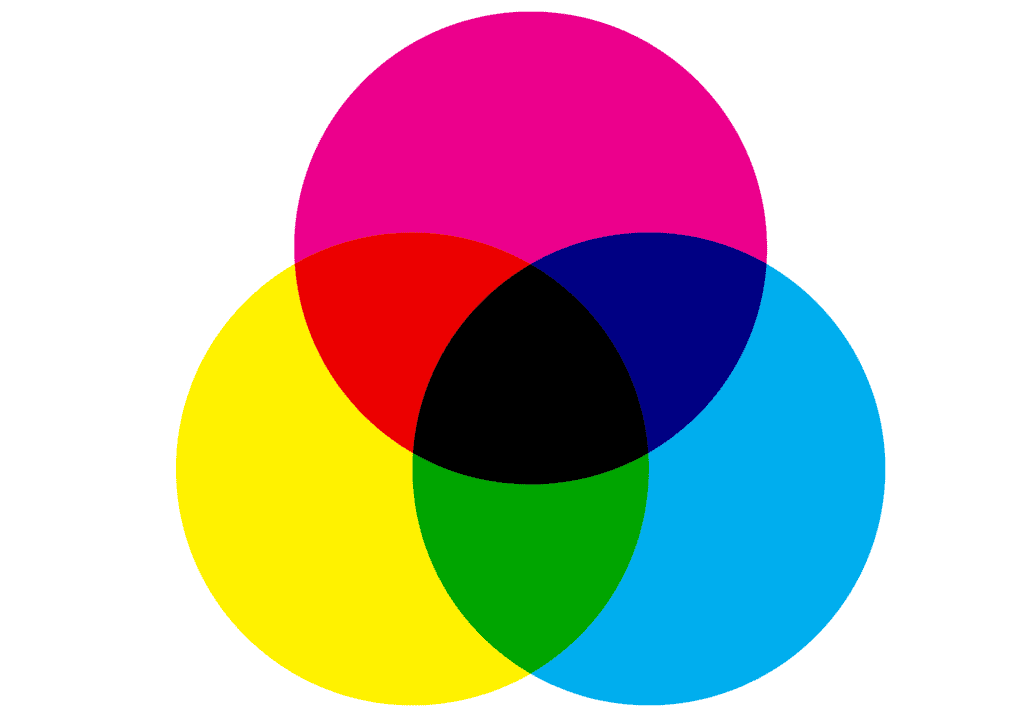
However, these CMYK primaries are less popular among artists. Because sometimes you cannot get the same punch as using RBY colors as primaries when CMYK primary colors are used. Even though this is an interesting color theory that you will need to know.
Magenta on digital screens
RGB (red, green, and blue) color model is used to create colors on digital screens like the TV, computer, and mobiles. In the RGB color model magenta is a secondary color that is created when red and blue lights are mixed. RGB color model uses colored lights and not any physical color pigments.
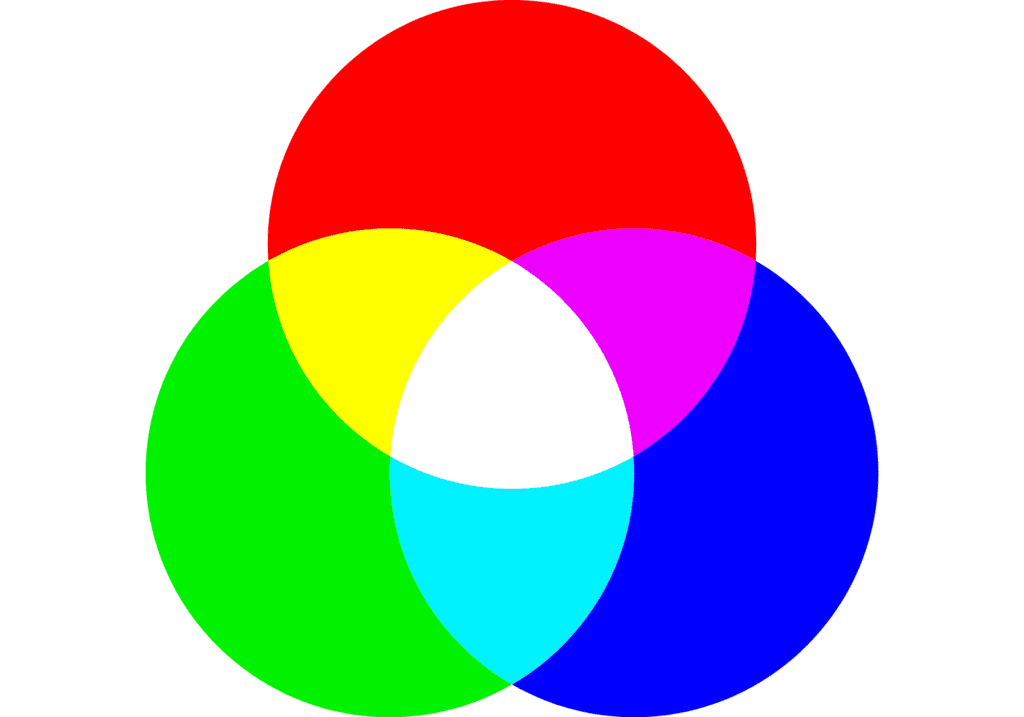
Digital screens use a different magenta color than printers. It is called magenta or Fuchsia. This color is more intense than the ‘process magenta’. Process magenta is less vivid and vibrant than the magenta color used on digital screens.
Magenta or Fuchsia #FF00FF
Magenta in nature
However, in nature, you will not find these vibrant colors either magenta, fuchsia, or process magenta. Instead, you will see some beautiful magenta colors more on the muted side. However, we can make the magenta color we see in nature by combining pigments in artist paints.
Some of these magenta pigments in artist colors are quinacridone magenta (PR 122) and primary magenta (PV 19). The primary magenta in paint is very close to the process magenta color used by printers. So I will use this primary magenta in artist paint as a reference to mixing magenta colors.
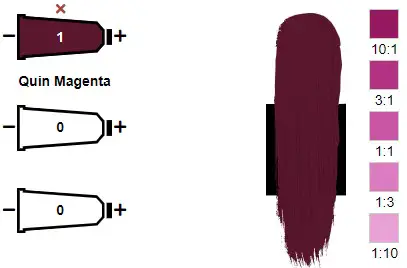
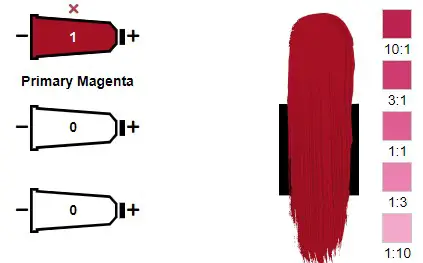
I used the Golden color mixer to obtain the above heavy body acrylic color swatches. As you can see primary magenta is more like a reddish-purple color.
Magenta is a made-up color by our brains
Even though we can see magenta color all the time around us, it is not there. It is not among the colors that we can see on the visible light spectrum. In theory, we can only see the colors in the visible light spectrum. So as you can see there is no magenta color in the visible light spectrum.
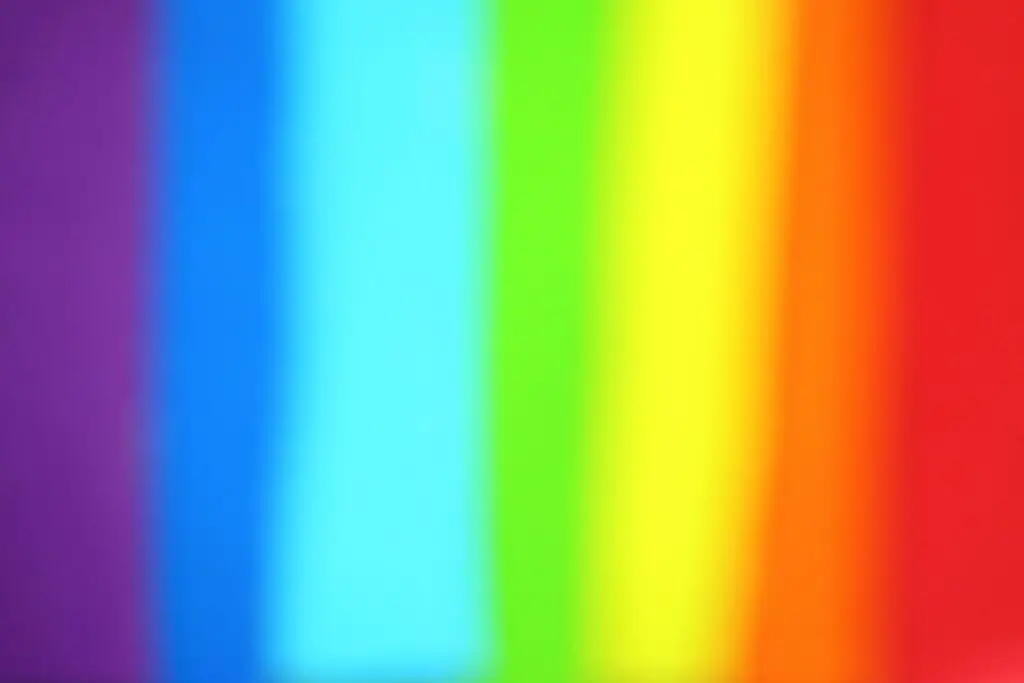
Magenta is a color invented by our brains when both red and blue signals come into our brains. It shows us as a magenta color. It is a color made by our brain to fill the gap between violet and red color which are at the opposite ends of the visible light spectrum.
If you are interested to learn more about this you can read my article; What colors make violet? The color mixing guide is included. There you will see a comparison of purple and violet colors explained with the light spectrum.
What colors make magenta?
Magenta is a primary color for paints and dyes used in printing as well as artist colors. So the best choice would be using a magenta color itself like quinacridone magenta or quinacridone red when painting. However, if you want to mix the magenta color with paint, here is the best way to do it.
Magenta can be made by mixing quinacridone red and cadmium red medium in a 5: 1 ratio. This color is closed to primary magenta. Mix titanium white to lighten the color. The orange undertone of cadmium red will mute the blue undertone of quinacridone red a bit, when mixed.

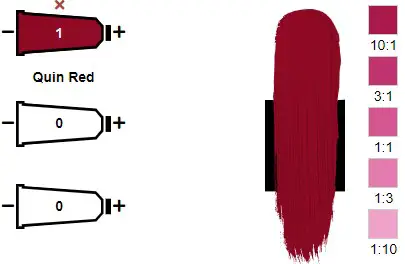
As you can see, the mixed primary magenta is a reddish-purple color and very much different from quinacridone magenta. Quinacridone magenta is more biased toward blue color. However, it is a very useful color to have to make vibrant purple colors which otherwise is difficult. Quinacridone red also makes vibrant purple colors.
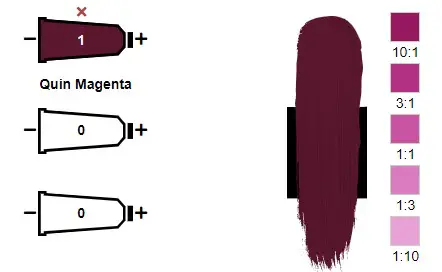
Let’s see how to mix the primary magenta color with quinacridone magenta. In this case mix quinacridone magenta and cadmium red in a 2:1 ratio.
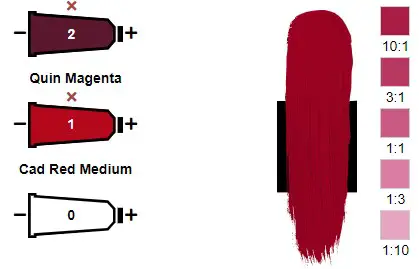
Other options…
I have seen some people recommend cobalt blue and cadmium red to make the magenta color. But it only makes a muddy brown color. This is because of mixing complementary colors. Cadmium red has a yellow undertone to it. So it is an orangish-red color. Cobalt blue is a purely blue color without a red or green color bias.
Orange is a complementary color to blue. So when cadmium red is mixed with cobalt blue it only makes a muddy color instead of magenta. Never use these two colors together.
Only blue colors with red undertone and red colors with blue undertone mix vibrant magenta or purple colors.
I have seen some even suggest using quinacridone violet with a red. If you use quinacridone violet then the mixed color would be more purplish. In this case, be mindful of the red color you are using.
If you use cadmium red with quinacridone violet then the mixed color will be more muted. Therefore mix magenta as I have mentioned above.
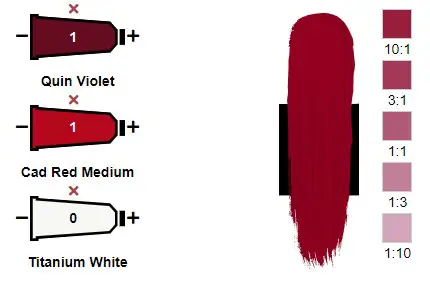
Does red and purple make magenta?
Mixing red and purple colors do not make magenta color although magenta is known as a reddish-purple color. If you try to mix red with purple either you will end up with a muddy color or a more purplish color.
But I will tell you how to mix a vibrant and saturated purple color. Mix quinacridone red, ultramarine blue, and titanium white in a 4:1:1 ratio to make a vibrant and saturated purple color. You can also use quinacridone magenta instead of quinacridone red color.
Purple #800080
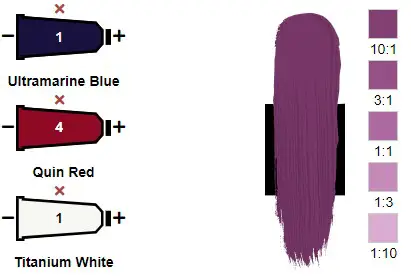
Does red and yellow make magenta?
In general red and yellow can make the magenta color. Mix bismuth vanadate and quinacridone red in a 1:6 ratio. Use a cool red color with blue bias such as quinacridone red to mix with a less strong, cool yellow like bismuth vanadate yellow. The mixed color would have a strong red bias.
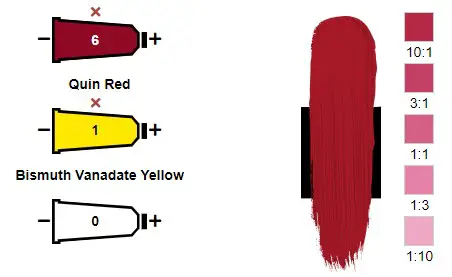
What colors make magenta without red?
In general, red color is needed to mix an accurate magenta color. You cannot mix a magenta color without a red color like quinacridone red or cadmium red. However, you can use quinacridone magenta (PR 122) and primary magenta (PV 19) by themselves as the magenta color.
How to make dark magenta?
Dark magenta can be made by mixing magenta color with the burnt umber, black or complementary color of magenta. Mix quinacridone magenta or mixed magenta with phthalo green (blue shade) to darken the color and reduce the chroma of color. It makes a darker muted magenta color.
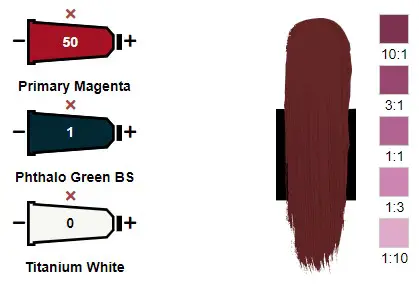
When mixing a darker color with a lighter color, always mix the darker color into the lighter color very little by little. This way you can achieve different values of the muted magenta color. When muting a color by mixing it with its complementary color, you are darkening and muting the color at the same time.
Muting colors is important in painting because you will not see an intense color like magenta, unless for some flowers. In this case, you will need to mute the magenta color using its complementary color.
Mixing magenta with other colors
Let’s see how magenta will react when mixed with different other colors. You need to know that if magenta is mixed with its complementary color green, it will be muted.
Magenta and orange
When magenta is mixed with orange, it creates a reddish-orange color. I have mixed primary magenta with cadmium orange in a 2:1 ratio with the Golden color mixer. Below is my result.

You can change the ratio of primary magenta and cadmium orange mixed. This way you can make the mixed color either reddish color or orangish color. You can also mix in titanium white to change the value of a color.
Magenta and purple
Mixing magenta with purple makes a nice reddish-purple color. It is a nice muted purple color with a red bias. I have mixed this color using the Golden color mixer and included my results below.
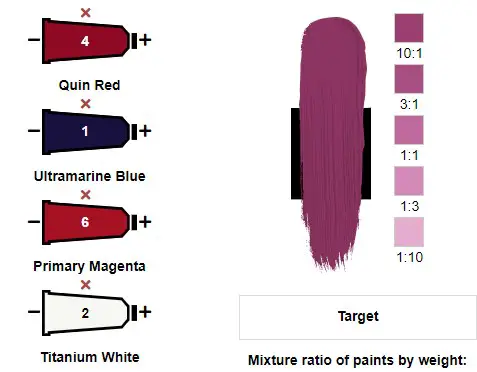
Here first I mixed the purple color as described above, using ultramarine blue, quinacridone red, and titanium white. Then I added 6 parts of primary magenta to the purple mix. This created a beautiful purple color that has a red bias. You can adjust the value of the mixed color by mixing different ratios of titanium white.
I have written a whole article explaining the difference between purple and violet colors. You will also learn a lot about color vision in simple terms there.
Making magenta with different mediums
There are many mediums you can use to make magenta. You can make magenta with the light on the screens. Also, you can make magenta with dyes, pigments, and different art mediums. Let’s look at some of them below.
What colors make magenta with acrylic paint?
Throughout this article, I have used examples of mixing magenta with acrylic paints. So to mix the closest color to magenta with acrylic paints, mix quinacridone red and cadmium red medium in a 5: 1 ratio.
Quinacridone red is just like magenta and you can use that color as it is magenta. But when you mix quinacridone red with cadmium red, there is a red punched to the mixed color. This way you can make a redder purple or a magenta color.
However as magenta is a pure color you can get with acrylic paints, I suggest you get quinacridone magenta. It will help you mix vibrant purple colors for your paintings.
When mixing acrylic paints always use artist-grade acrylic paint. This will stop you from frustrating about the colors you mix. Student grade or craft quality acrylic paint usually mixes dull, muddy colors. Therefore get a good quality student-grade acrylic paint brand or an artist-grade acrylic paint.
I have written a whole article about the best acrylic paint brand to use for a beginner that is also budget-friendly. You will find a comparison of several other brands as well in that article.
What colors make magenta with food coloring?
Colors can make the food beautiful. You may want to color a buttercream frosting or any other fondant with magenta. Let’s see how to make magenta with food coloring.
Food colorings come in sets and individual colors. You can get them as liquids or gels. Usually, food colors have generic color names like pink, green and blue. So to mix the magenta color you will need to combine pink food coloring with blue food coloring on a 3:1 ratio.
The pink food coloring will look more like magenta. So add more of this pink color and add only a drop of blue color to balance out the pink color food coloring. You can adjust the pink to blue ratio as you like. If you add more blue you will get a violet color.
To intensify the color you have mixed, add more food coloring drops, always following the ratio. It is better to start with only a few drops first and then gradually add more food coloring drops following the ratio. This way you can get to the magenta color easily.
If you think the color is more intense and darker than you want, mix in uncolored food (frosting, buttercream, etc.) to lighten the mixed color.
How to make magenta with oil paint
In most cases, oil paint pigments are the same as acrylic paints. So all the colors I used to mix magenta with acrylic colors are available in oil colors as well. You need to mix the same colors as with acrylic paints to get a magenta color with oil paints.
Mix quinacridone red and cadmium red medium in a 5: 1 ratio to make a magenta or reddish-purple color. Mix with titanium white to adjust the value of the color. Just like with acrylic paint, you can use quinacridone red itself as the magenta color in oil paint as well.
To mute and darken the magenta color, mix it with phthalo green color.
I have written a whole article about acrylic paint color mixing charts. You can learn a lot about mixing all the primary and secondary colors there. There is a free downloadable color mixing chart and a grid as well.
Conclusion
Magenta is a primary color in paint. It is harder to mix magenta accurately with paint but you can get the best shot at it by mixing quinacridone red or quinacridone magenta with cadmium red medium. Add more quinacridone red or quinacridone magenta and less cadmium red medium to the mix. Although magenta can be mixed my advice is to buy a tube of quinacridone magenta instead of mixing. It will come in handy when mixing bright and vibrant purple or magenta colors.
